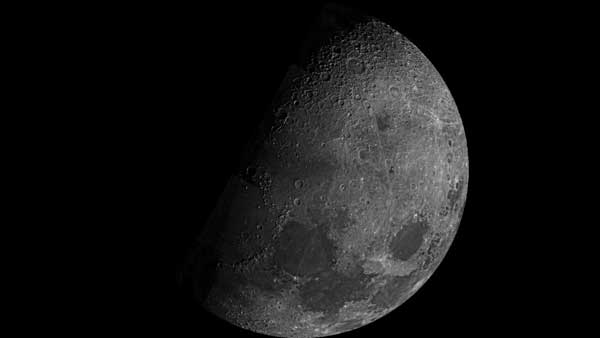
Near-Earth Asteroid Might be a Lost Fragment of the Moon (Image Credit: SNN)

TUCSON, Ariz. (University of Arizona PR) — A near-Earth asteroid named Kamo`oalewa could be a fragment of our moon, according to a paper published today in Nature Communications Earth and Environment by a team of astronomers led by the University of Arizona.
Kamo`oalewa is a quasi-satellite – a subcategory of near-Earth asteroids that orbit the sun but remain relatively close to Earth. Little is known about these objects because they are faint and difficult to observe. Kamo`oalewa was discovered by the PanSTARRS telescope in Hawaii in 2016, and the name – found in a Hawaiian creation chant – alludes to an offspring that travels on its own. The asteroid is roughly the size of a Ferris wheel – between 150 and 190 feet in diameter – and gets as close as about 9 million miles from Earth.
Due to its orbit, Kamo`oalewa can only be observed from Earth for a few weeks every April. Its relatively small size means that it can only be seen with one of the largest telescopes on Earth. Using the UArizona-managed Large Binocular Telescope on Mount Graham in southern Arizona, a team of astronomers led by UArizona planetary sciences graduate student Ben Sharkey found that Kamo`oalewa’s pattern of reflected light, called a spectrum, matches lunar rocks from NASA’s Apollo missions, suggesting it originated from the moon.
Researchers aren’t yet be sure how the asteroid may have broken loose from the moon. That’s partly because there are no other known asteroids with lunar origins.
“I looked through every near-Earth asteroid spectrum we had access to, and nothing matched,” said Sharkey, the paper’s lead author.
A debate over Kamo`oalewa’s origins between Sharkey and his adviser, UArizona associate professor of lunar and planetary sciences Vishnu Reddy, led to another three years of hunting for a plausible explanation.
“We doubted ourselves to death,” said Reddy, a co-author who started the project in 2016. After missing the chance to observe the asteroid in April 2020 due to a COVID-19 shutdown of the Large Binocular Telescope, the team found the final piece of the puzzle in 2021.
“This spring, we got much needed follow-up observations and went, ‘Wow it is real,’” Sharkey said. “It’s easier to explain with the moon than other ideas.”
Kamo`oalewa’s orbit is another clue to its lunar origins. Its orbit is similar to the Earth’s, but with the slightest tilt. Its orbit is also not typical of near-Earth asteroids, according to study co-author Renu Malhotra, a UArizona planetary sciences professor who led the orbit analysis portion of the study.
“It is very unlikely that a garden-variety near-Earth asteroid would spontaneously move into a quasi-satellite orbit like Kamo`oalewa’s,” said Malhotra, whose lab is working on a paper to further investigate the asteroid’s origins. “It will not remain in this particular orbit for very long, only about 300 years in the future, and we estimate that it arrived in this orbit about 500 years ago.”
Kamo`oalewa is about 4 million times fainter than the faintest star the human eye can see in a dark sky.
“These challenging observations were enabled by the immense light-gathering power of the twin 8.4-meter telescopes of the Large Binocular Telescope,” said study co-author Al Conrad, a staff scientist for the telescope.
The study also included data from the Lowell Discovery Telescope in Flagstaff, Arizona. Other co-authors on the paper include Olga Kuhn, Christian Veillet, Barry Rothberg and David Thompson from the Large Binocular Telescope; Audrey Thirouin from Lowell Observatory; and Juan Sanchez from the Planetary Science Institute in Tucson. The research was funded by NASA’s Near-Earth Object Observations Program.
University of Arizona
The University of Arizona, a land-grant university with two independently accredited medical schools, is one of the nation’s top 50 public universities, according to U.S. News & World Report. Established in 1885, the university is widely recognized as a student-centric university and has been designated as a Hispanic Serving Institution by the U.S. Department of Education. The university ranked in the top 20 in 2019 in research expenditures among all public universities, according to the National Science Foundation, and is a leading Research 1 institution with $734 million in annual research expenditures. The university advances the frontiers of interdisciplinary scholarship and entrepreneurial partnerships as a member of the Association of American Universities, the 66 leading public and private research universities in the U.S. It benefits the state with an estimated economic impact of $4.1 billion annually.
– Advertisement –







